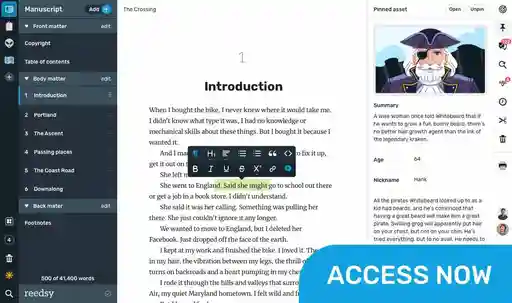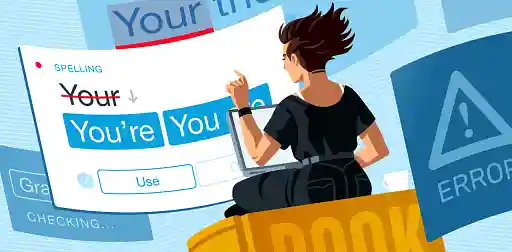Last updated on Oct 14, 2025
Book Writing Templates: A Writer’s Secret Weapon [Download]
Dario Villirilli
Editor-in-Chief of the Reedsy blog, Dario is a graduate of Mälardalen University. As a freelance writer, he has written for many esteemed outlets aimed at writers. A traveler at heart, he can be found roaming the world and working from his laptop.
View profile →No matter what level of experience you have as an author, you can always use a little help to get your manuscript off the ground. Book writing templates are tools that authors can leverage to fuel their progress: from brainstorming characters, to worldbuilding, to structuring a story, templates can help you make sure you start off on the right foot.
The goal of using a template is not to make cookie-cutter novels, but rather to better shape your book idea into a unique story. If you’re keen to receive a little help, here are 10 different types of book writing templates you can use to sketch out your stories.
Want to finish your novel in just 3 months? Sign up for our How to Write a Novel course.

NEW REEDSY COURSE
How to Write a Novel
Enroll in our course and become an author in three months.
Download: Reedsy's top writing templates
Sign up below to receive all ten book writing templates featured in this post (or continue reading to download individual templates).
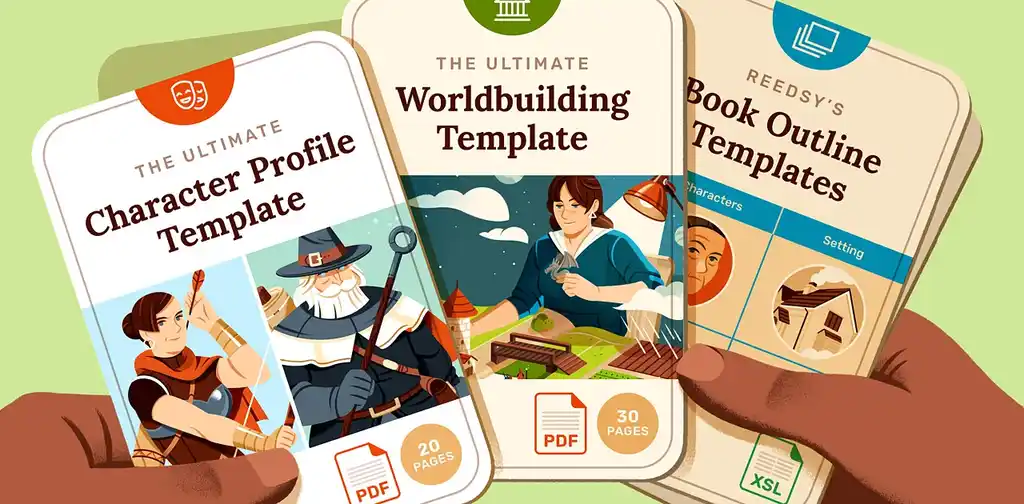
FREE TOOLKIT
The Top 10 Book Writing Templates
Use these to develop your characters, outline your plot, and write your book.
Or if you'd like to build your story directly in a writing app, we recommend using the free Reedsy Studio. Simply create your account with one click below and start outlining with the pre-made story templates — right away!
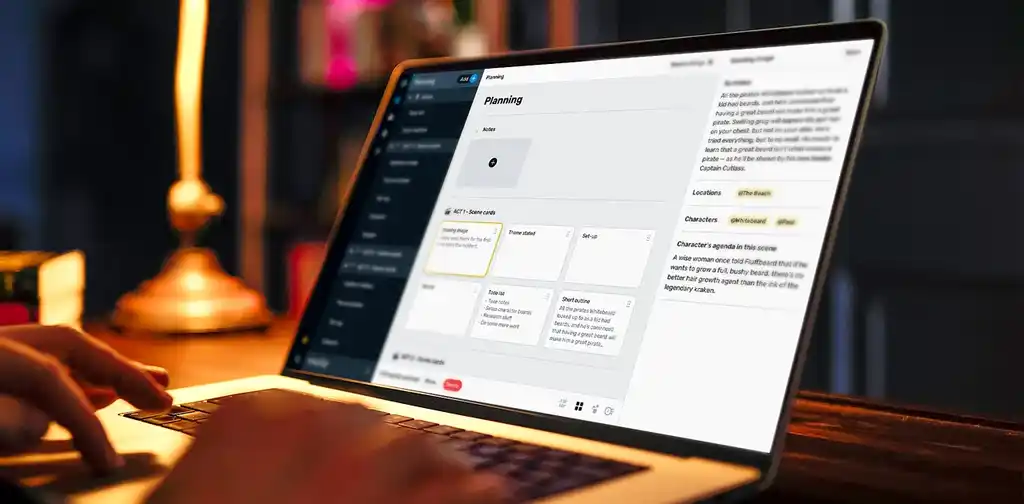
FREE OUTLINING APP
Reedsy Studio
Use the Boards feature to plan, organize, or research anything.
Developing an idea
The most fundamental type of book template concerns concept development. Think of book ideas as seeds: not all of them have the potential to become a great big oak — but some do.
Q: What is the single most important piece of advice for first-time novelists?
Suggested answer
Write the story you want to write, need to write--and want to read. Don't think about or worry about market trends, or how you will position your book on the market, or writing a book that will blow up on BookTok. A novel is a marathon, and in order to see it all the way through, you have to love your story (you can dislike some of your own characters of course, but you need to be deeply passionate about the overall story you are telling). In practical terms, by the time you write, revise, and publish your novel, it's likely that overall publishing trends will have shifted anyway. Write the book you want to write--things like what readers want, what publishers want, what agents want, can come later!
Kristen is available to hire on Reedsy ⏺
Read many books in your genre and look for why you like that particular book or don't like it. Get a feel for what works and what doesn't. Try to read books that sold well and were published in the last 5-10 years. Publishing norms change and styles change with time.
For instance, in the past, much time was spent setting up the story, and many opening paragraphs may have been spent describing the scenery and visual elements. While those elements are still important, modern books move at a much faster pace and spend less time on these elements by using sentences of description woven into the narrative rather than information dumps and blocks of long description that can slow the pace.
So, reading current books in your genre is the best way to learn writing methods yourself.
Melody is available to hire on Reedsy ⏺
1. Book Development Template
To help you determine if your idea is 'fertile' enough, we've made a book development template designed to test the waters.
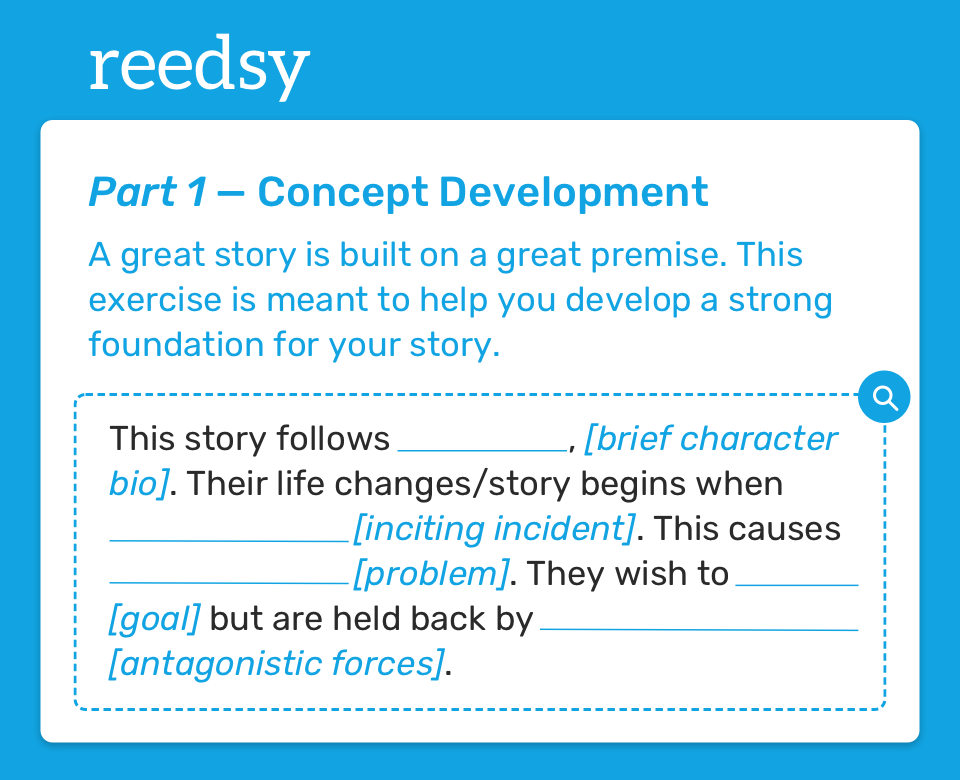
Our seven-part book development template will guide you step-by-step in nailing down your protagonist, supporting characters, antagonists, as well as your worldbuilding and plot structure. If that wasn’t enough, it will also help you pick your voice and perspective.
In other words, it will help you germinate that idea into a sapling that will eventually become your first draft. To download this specific template, insert your email below — or sign up above to receive all templates.
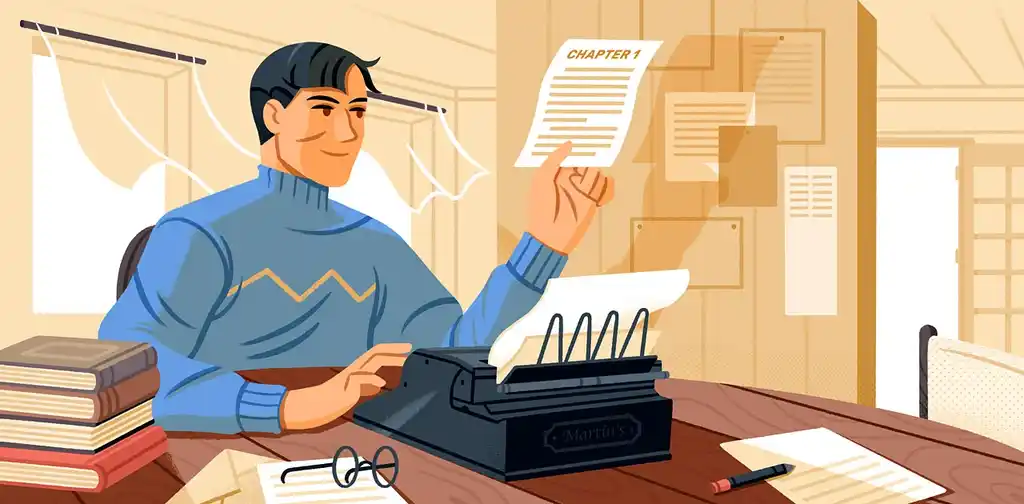
FREE RESOURCE
Get our Book Development Template
Use this template to go from a vague idea to a solid plan for a first draft.
Structuring your narrative
Once you have a great story idea, you need to actually put it down on paper (or in a book editor, but paper sounds better, doesn’t it?). Many authors write when inspiration strikes, following their intuition for chapters on end without a plan. While this approach might be powerful to get things going, it can be useful to think about how you'll structure your story early on in the writing process to avoid running into plot holes and writing yourself into a corner.
Q: Which story structures give beginners the best foundation for writing engaging fiction?
Suggested answer
First, ask yourself, "Whose book is this?" If you were giving out an Academy Award, who would win Best Leading Actor? Now, ask yourself what that character wants. Maybe they want to fall in love, recover from trauma, or escape a terrible situation. And what keeps them from getting it? That's your plot. You can have many other characters and subplots, but those three questions will identify the basis of your story. I always want to know how the book ends. That sets a direction I can work toward in structuring the book.
I like to go back to Aristotle: every story needs a beginning, a middle, and an end. Act I, Act II, and Act III. Act I sets up the story. Mary and George are on the couch watching TV when… That's Act I. We introduced our characters and their lives and set a time and place. Now, something happens that changes everything. The phone rings. A knock on the door. Somebody gets sick or arrested or runs away from home. Something pushes your character or characters irrevocably into Act II. Maybe in Act I, George got arrested. In Act II, he's trying to prove his innocence, and all sorts of obstacles get in the way. Maybe somebody calls Mary and tells her George has another family she's never heard about, and she spends Act II trying to save her marriage or herself. Act III is the outcome. It's when the boy gets the girl or doesn't get the girl or gets the girl and isn't sure he wants her after all.
I'm a big fan of outlining. You're probably going to change it a lot as you get writing and get to know your characters intimately, but it gives you structure, so when you sit down to write, you know what you're going to write about. Even if you don't know precisely how you're going to break your story into scenes and chapters, it's good to know how the book ends so you're moving towards something. Before I start writing a scene, I need to know who is in it, where it takes place, what happens, and why it's in this book. Does it move the story forward? Does it give readers insight into the character? Or is it just taking up space on the page?
Joie is available to hire on Reedsy ⏺
Using a three-act story arc is the easiest way to define a story because at its core, each story has a beginning, middle, and end. A set-up to a journey, a journey, and a conclusion to this journey, will make up the three acts of every story.
Melody is available to hire on Reedsy ⏺
For new authors, some of these structures are a good place to start writing decent fiction without killing inspiration. The three-act structure is a classic, breaking up a story into setup, conflict, and resolution. This makes it easy for writers to establish characters and stakes clearly, build tension through conflict, and wrap up well.
One of the methods that is a good spot to begin is the "Hero's Journey," which charts a hero's journey from challenge, change, to return. Its formal steps govern pacing and character development without much room for imagination.
Why this tool is so valuable to beginning writers is it is less rule than guidepost, giving direction without limiting writers to formulaic composition, permitting them to focus on voice, dialogue, and theme.
As one practices, working through these structures develops an intuitive sense of narrative flow, so that experimentation, innovation, or even breaking the rules feels more natural.
Beginning with a predetermined framework enables authors to balance imagination and clarity and create a story that is engaging, emotionally resonant, and relevant without sacrificing ground for their own distinct imagination to show its face.
John is available to hire on Reedsy ⏺
When I work with new writers struggling about where various story beats go, I typically refer them two The Hero's Journey by Joseph Cambell, and Save the Cat Writes a Novel by Jessica Brody. Both of these describe slightly different elements of what is included in a story.
Now, sometimes writers can get too caught up in fitting their story exactly into these story templates. But that's all they are; templates. An analogy I like to use with authors is that there are cooks, and there are chefs.
Cooks follow the recipe (story structure) exactly, never deviating, and while it can produce good dishes, there sometimes is a lack of creativity within. Chefs, on the other hand, also follow the recipe, but they also know it well enough to deviate from it. Add their own flair, flourish, and spices. By the end, the story is recognizable but their unique take on it.
You have to know the rules to break them, so for newer authors I work with, having them break down their story into the various story beats and plug them in to the two templates above can help them see where each story element fits, and maybe where a story element needs to be added or elevated.
Sean is available to hire on Reedsy ⏺
Luckily, in literature there are a few common story structures every author can refer to when plotting, starting with the most popular of them all 一 the Three-Act structure.
2. Three-Act Structure Template
Originally defined by Aristotle two thousands years ago, the Three-Act structure divides a story in a beginning, middle, and end. This method is one of the most commonly used when plotting novels, as it provides a basic skeleton for your story that ensures all your plot points are in place, building tension and stakes until the climax and resolution.
To download this specific template, insert your email below — or sign up above to receive all templates.
Free Download: Three-Act Structure Template
Effortlessly plot your story with our customizable template. Enter your email, and we'll send it to you right away.
By dissecting the story in three parts of equal importance, you’ll be able to create a strong narrative that keeps readers hooked from start to finish. You can print out the template or edit it online 一 for each section you’ll be asked to write a synopsis of what happens in the story, and a specific example of it.
3. Hero’s Journey Template
Another, more hands-on take on the Three-Act structure is the Hero’s Journey, which focuses on the transformation of a single protagonist. Divided in twelve distinct phases, it helps you deconstruct your protagonist's journey, from the initial call to adventure to the return home as a changed person.
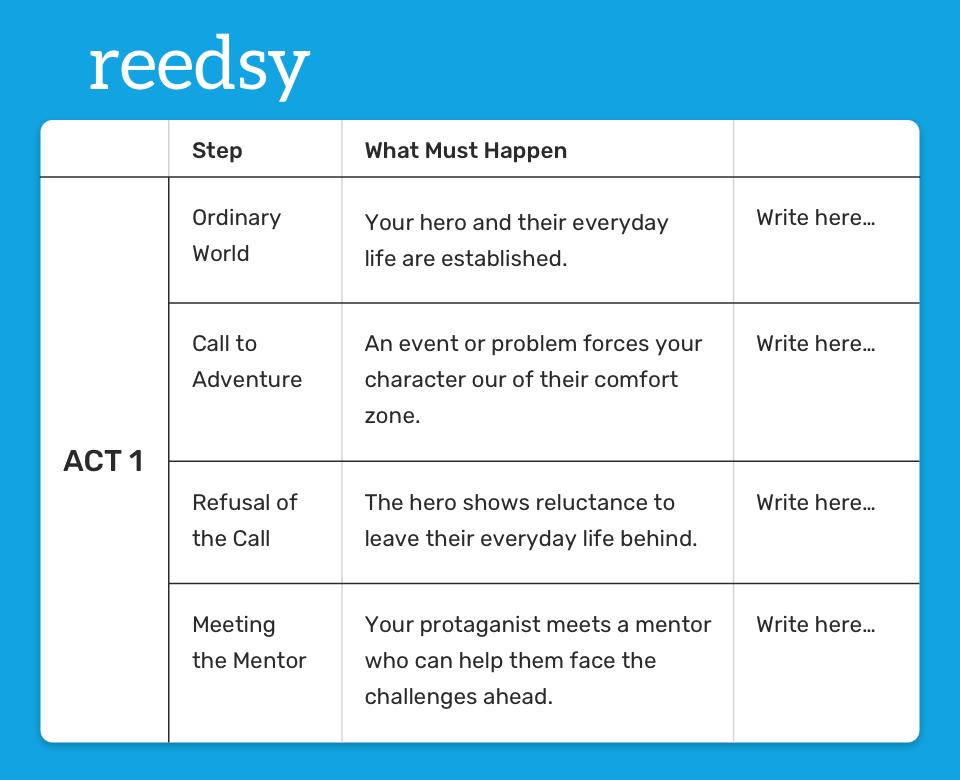
Our template will help you write down a short synopsis about important story elements, such as:
- The ordinary world where it all starts;
- The call to adventure and refusal of it;
- Mentors, enemies, and allies on the hero’s journey;
- The moments of greatest fear and reward;
- The lesson to bring home, and more.
These timeless elements have been used in countless stories, from Biblical tales to Star Wars, and will give you creative freedom while ensuring your narrative stays on track. To download this specific template, insert your email below — or sign up above to receive all templates.
Free Download: Hero's Journey Template
Effortlessly plot your story with our customizable template. Enter your email, and we'll send it to you right away.
4. Save the Cat Beat Sheet
If you have trouble figuring out your list of scenes, you can get more granular with the Save the Cat template, which tells you exactly what should happen on what page. Originally developed for screenwriters, it has been widely adopted by novelists to plan their stories with theme, character development, and pacing in mind.
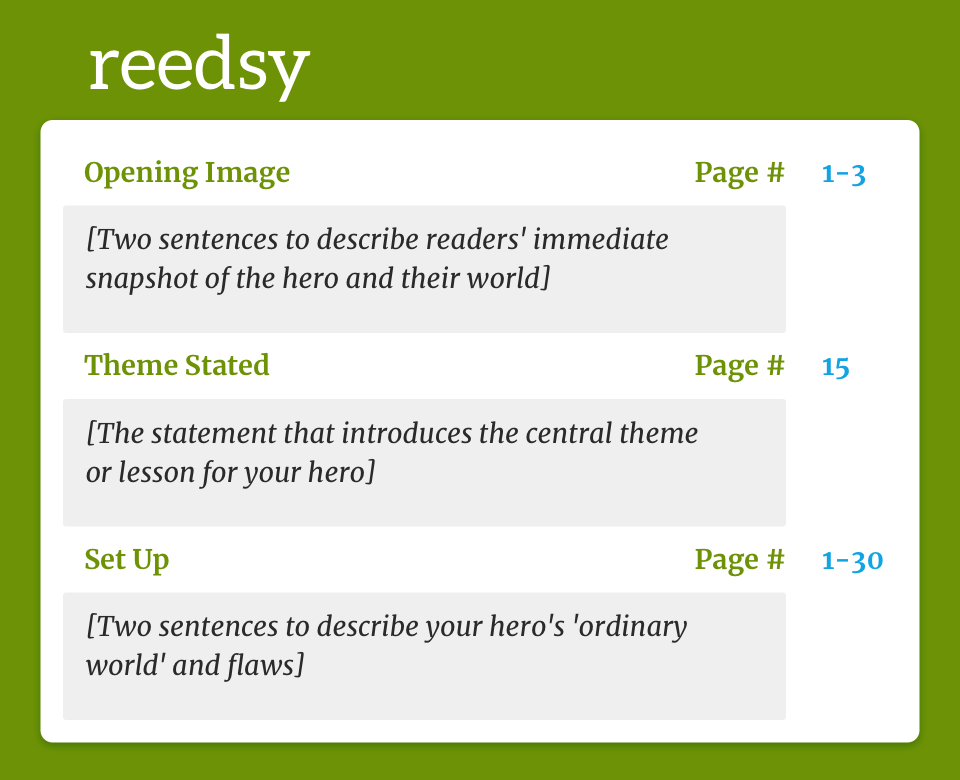
The Save the Cat template builds upon the classic Three-Act structure, but further dividing a story into 15 beats that tell you when the inciting accident, subplots, and other key elements should happen.
Q: How can writers incorporate popular story models like The Hero's Journey and Save the Cat while maintaining originality and creativity in their writing?
Suggested answer
Saving the cat can come into play in many forms. At the end of the day, readers want to root for likable heroes. If you make your main character sympathetic in some way, that sort of ticks the "saving the cat" box off nicely.
A journey can comprise so many forms. It can be a literal journey Dorothy takes from Kansas to Oz and then back again in The Wizard of Oz, or it can be an inner journey of deciding to take charge of his life and not let others make his decisions for him, as we see with Macon Leary in the book The Accidental Tourist.
As long as your "save the cat" moment and "hero's journey" uses unique ideas that have not become cliché, you should be fine.
Melody is available to hire on Reedsy ⏺
In our template, you can simply enter your target word count and it'll tell you exactly when and for how long each beat should last, so that your story doesn't lag in places where it should be motoring along.
To download this specific template, insert your email below — or sign up above to receive all templates.
Free Download: The Beat Sheet template
You’ll get it in your email inbox right afterward.
Outlining your story
Once you have defined your larger story structure and developed your idea, you can use a book template to go in scene by scene and keep track of the main plot and subplots, and how they fit into your book’s overall timeline.
Q: What outlining techniques can 'pantsers' use to guide their storytelling without stifling creativity?
Suggested answer
Even having a very basic three-part/three-act overview of the story with just one page of notes per act will help you stay on course when drafting, so the finer details can emerge while you write. You want to know at least how the story ends, and then drive forward toward that ending. The ending doesn't have to be too specific, again, as details may arise while crafting the story, but knowing if it will be a tragedy or have a positive outcome at the end should help to drive the narrative forward.
Melody is available to hire on Reedsy ⏺
5. Book Outline Template
Save it in your Google Sheets, edit it, move scenes around, and tweak it until you’re satisfied with the narrative flow.
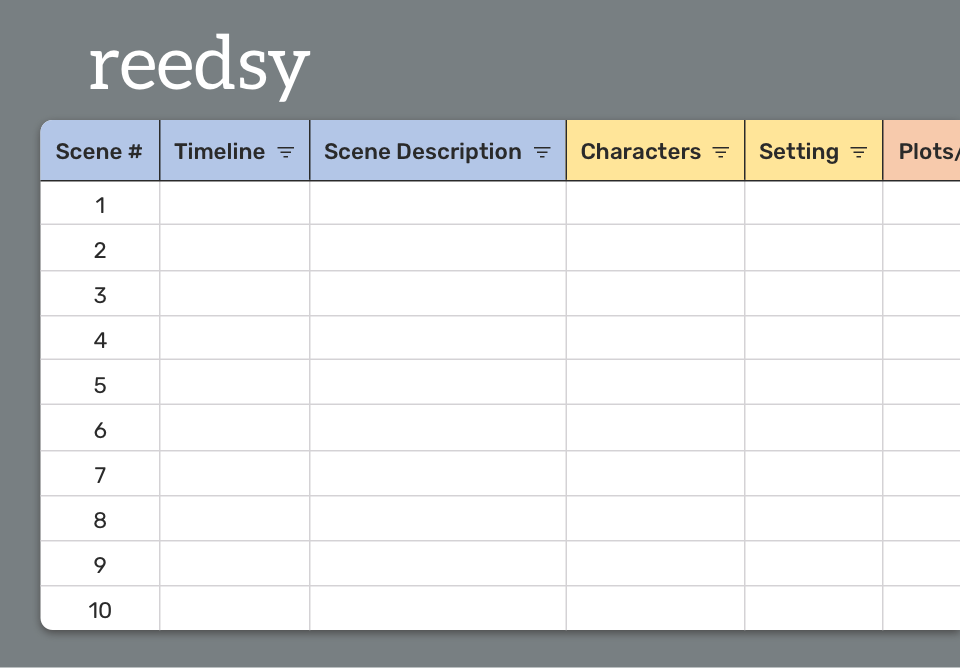
Depending on your preference, our book outline templates includes three exercises that can help you create:
- A basic story outline that includes all of the main variables;
- A plot-driven outline that tracks your main plots and subplots by chapter; and
- A simple scene list that defines each scene's purpose in the story arc.
To download this specific template, insert your email below — or sign up above to receive all templates.
Free Download: Book Outline template
You'll get it in your email inbox right afterward.
Building the world of your book
Apart from large-picture templates, some templates can help with specific aspects of your stories, like creating a fictional world from scratch 一 from your world’s history, to geography, to technology and more.
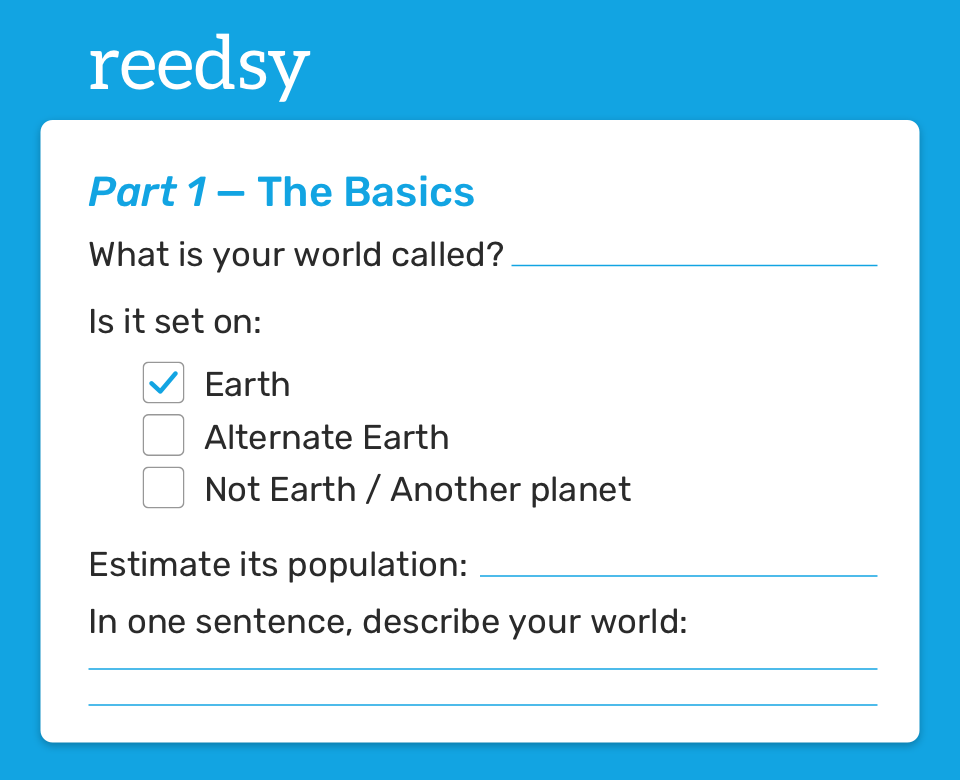
6. Worldbuilding Template
If you’re a fantasy or sci-fi writer, or you simply want to go deep with your creating your story's world, use our 7-part template to establish aspects such as:
- Name and location;
- Geography;
- People and language;
- Social systems (religion, history, etc.);
- Technology and magic; and
- Economy and politics.
If you struggle to piece together all of your world’s features, this template is for you 一 print it out and spend some time with it. This will help you map the environment to the point where it feels like a real place, and you can better communicate it to your readers. To download this specific template, insert your email below — or sign up above to receive all templates.

FREE RESOURCE
The Ultimate Worldbuilding Template
130 questions to help create a world readers want to visit again and again.
Creating compelling characters
Since characters are the heart of any story, it’s important to sculpt them to the smallest detail. To help you create remarkable characters, we made two separate templates: one to thoroughly define who they are, and one to test their boundaries in hypothetical scenarios.
Q: What tools or techniques can authors use to develop detailed and effective character profiles?
Suggested answer
Writers can establish good character profiles by examining surface information and interior depth. Beyond physical description, notice personality, values, and contradictions—what the character wants vs. what the character fears. Techniques like freewriting as a character or writing the character's background can elicit subtleties that don't find their way into the main action but still affect behavior. Some authors use Q&A-type questions to explore motivations, habits, and relationships, and other authors create images of the character's past to observe how it affects present decisions. What is most important is consistency: when you know how your character thinks and behaves, their actions make sense, and readers feel that they are interacting with real people and not with plot devices.
John is available to hire on Reedsy ⏺
This is so important because the character will drive your story.. You reader has to be fascinated by your protagonist and be routing for him or her. I always interview my characters in depth. I don't just ask them about the basics of their lives and history. I ask them what they fear most in life, what makes them get up in the morning.
Joie is available to hire on Reedsy ⏺
I provide all my clients with a template that I devised myself for ensuring that every single character in a novel is fully fleshed-out, colourful and contrasting, both within themselves and to other characters.
Vanessa is available to hire on Reedsy ⏺
I've had success doing Enneagram quizzes in each character's persona. Even if you don't believe in personality profiles, it's a good way to check whether a character's goals, motivations, and considerations are consistent. They can reveal gaps where you still have a question to answer about a character's background and, best of all, it reassures you that you're writing characters who contrast with one another, rather than representing different aspects of your temperament as the writer.
Mairi is available to hire on Reedsy ⏺
The most important issue for each character is what they want. Desire and wants fuel the story, especially regarding what the main character wants. When two characters want the same thing, this is when tension can arise organically.
Melody is available to hire on Reedsy ⏺
7. Character Profile Template
Similarly to building a world from scratch, developing an identity is not an easy task. After all, think about yourself: how long did it take you to become the person you are today? As many years as you’re old. So, how do you replicate that same process not just for one, but multiple protagonists 一 so that they feel like someone you could bump into in real life? Well, you can start by creating a detailed profile.
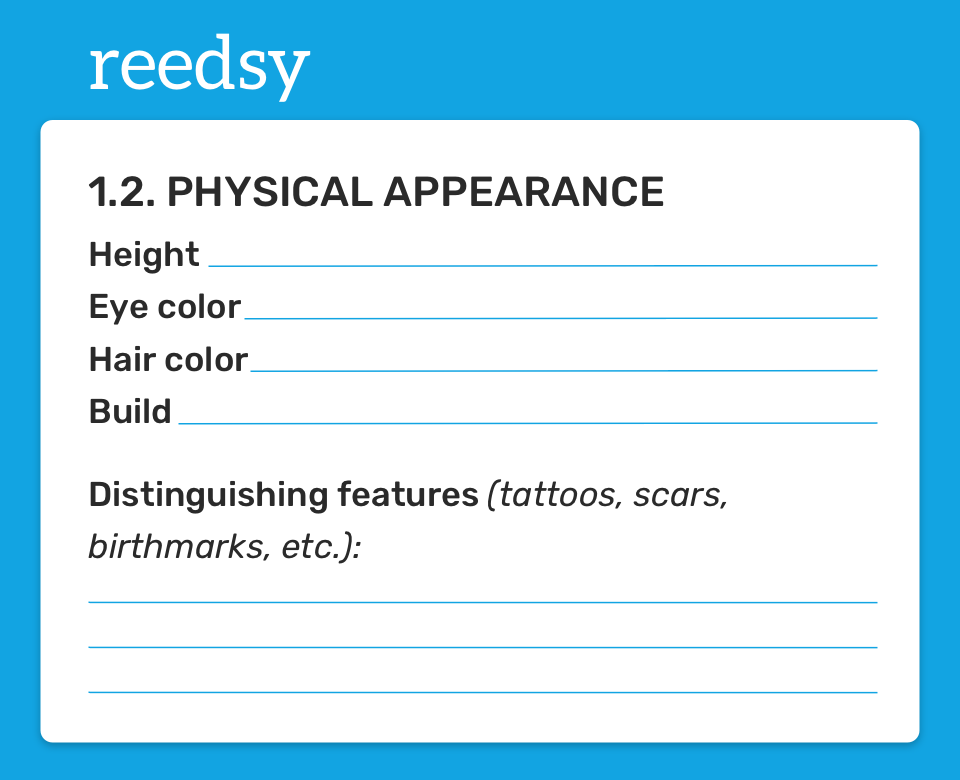
For each major character in your novel, you can print and fill out our character profile template. It will guide you step-by-step in detailing your character’s features, such as:
- Basic information (i.e. age, occupation);
- Physical appearance;
- Personal relationships;
- Family history;
- Major life events;
- Psychological traits; and
- Their hopes and dreams.
The template may start with superficial traits such as appearances, but then it urges you to also look beneath the skin. So, take the time to ponder over each of the sections to give yourself the chance to create truly compelling characters that readers will resonate with.
To download this specific template, insert your email below — or sign up above to receive all templates.
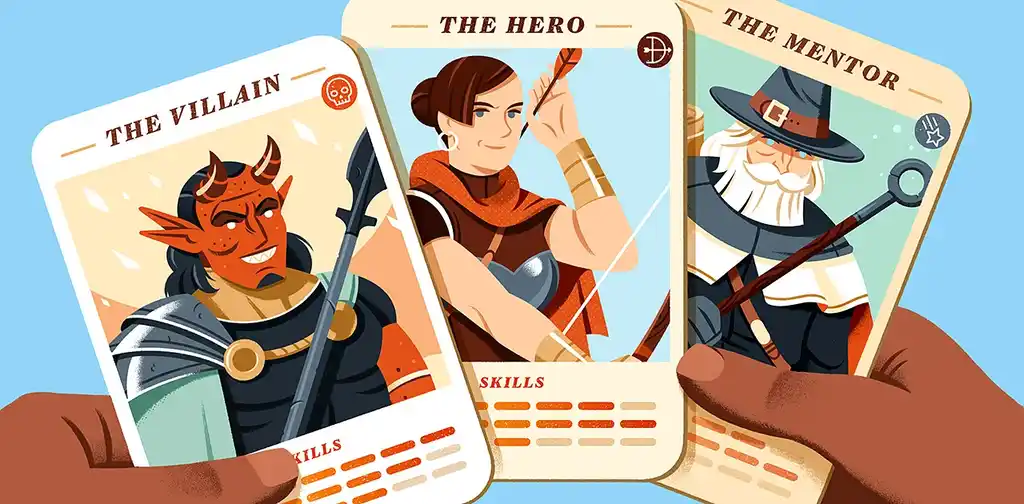
FREE RESOURCE
Reedsy’s Character Profile Template
A story is only as strong as its characters. Fill this out to develop yours.
8. Character Questionnaire
Once you have your multi-dimensional character, a fun exercise is to test how they would respond in different situations. For example, what would they do if a person they don’t want to see walks into the bar they’re at? Or what if they won the lottery?
Q: What is the most crucial piece of backstory an author should understand about their protagonist before beginning a novel?
Suggested answer
Whether in the backstory or in the current action of the book, once the reader starts reading, the author should know what their character wants. It can be a long-held desire or something new, based on changed circumstances.
There has to be a motivation and drive in the character. Or if there isn't any, and that is sort of the point of the book, you want to let the reader know why and what in their past has made them the way they are. This sort of "motivation" is a good thing to search for in each character. What has shaped them to do what they do and behave the way they behave in the story? They must stay "in character" throughout the book unless some sort of inner or outer impetus has forced them or inspired them to change their ways.
So this most crucial piece of backstory might be why your protagonist behaves the way they do, what motivates them and why, and what they want.
Melody is available to hire on Reedsy ⏺
You will be surprised at how much you can learn about your character this way, and even if these situations may not feature in your book, your deep understanding of your character will translate into your writing. 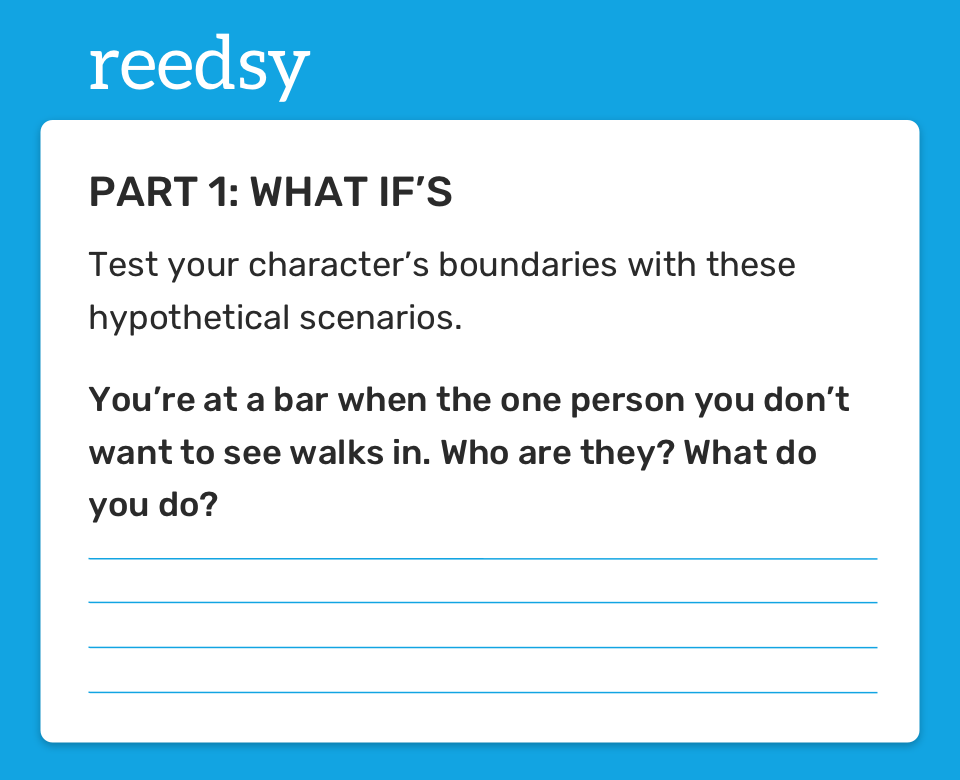
To download this specific template, insert your email below — or sign up above to receive all templates.

FREE RESOURCE
Reedsy’s Character Questionnaire
40 questions to help you develop memorable characters.
Formatting your manuscript to professional standards
Not all book templates concern the writing aspect of authorship. Some are just useful to format your manuscript in a way that adheres to industry standards before you send out your query letters.
9. Manuscript Format Template
While content matters more than how it’s presented, publishing professionals still expect you to present a professionally formatted manuscript. To help you not stand out for the wrong reason, you can use Reedsy’s manuscript format template.
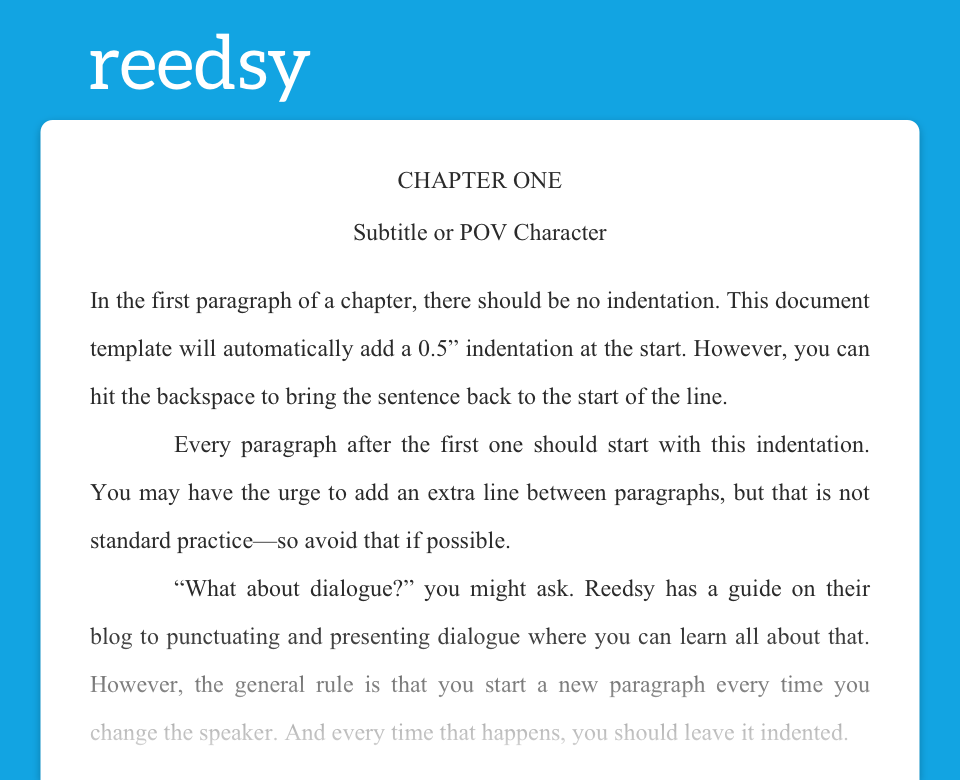
You just need to download a copy and edit it, either by writing directly in it, or copy-pasting (without formatting) the content of your novel. Again, if you want to download this specific template, insert your email below — or sign up above to receive all templates.
Alternatively, you could format your manuscript with one of the three free book templates available in Reedsy Studio.
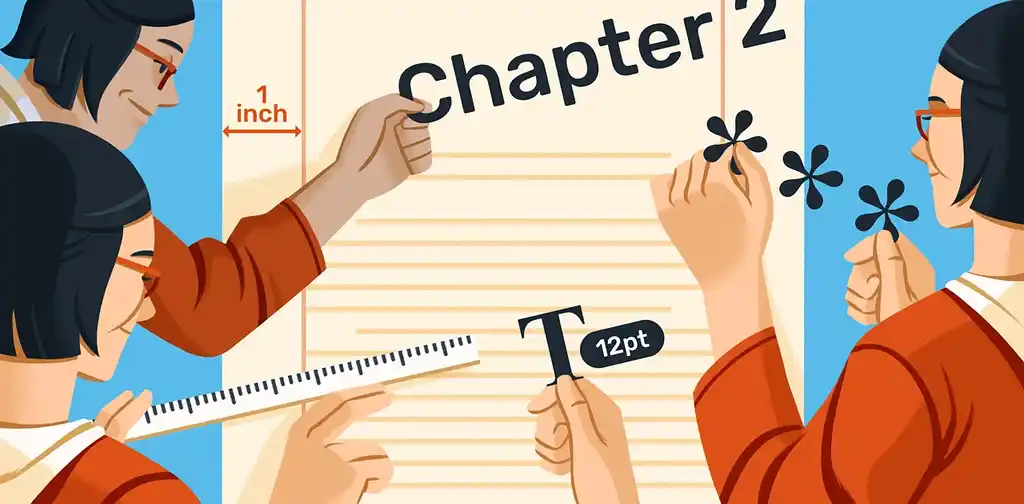
FREE RESOURCE
Manuscript Format Template
Get your manuscript ready for submission to agents and publishers.
10. Children's Book Manuscript Template
If you’re writing a children’s book, there are slightly different formatting rules you need to be aware of 一 for example, if you’re writing in verse or adding illustration notes.
Q: What are the most common formatting mistakes authors make when submitting children's manuscripts, and how can they be avoided?
Suggested answer
It depends on the end-goal of the manuscript. One issue I see frequently is that many picture book authors think they need to have an illustrator before reaching out to an agent or publisher. You do NOT need an illustrator for either of those.
The second note I have is that I see too many illustrator notes. If you're hoping to have a picture book published or represented, you need to keep in mind that you'll often have less creative control over the illustration. A few light notes are totally fine, but you'll want to let the illustrator have creative control.
For picture books, you also don't need to space each "page" or "spread" on a fresh page. Usually, the page-breaks and spreads will be decided by the illustrator and editor. It's often better if you send it without page breaks and just as a standard document with double spaced lines and standard font and font size (Times New Roman 12pt).
In terms of MG or YA, you'll want to set up your chapters with heading styles and populate the table of contents using those headings versus going in and typing the actual pages and such.
Val is available to hire on Reedsy ⏺
Including illustrations (Don't! unless you are an author-illustrator)
Funky fonts (You can't go wrong with Times New Roman, double spaced, 12 pt size)
Extensive art notes (It's important to leave room for the illustrator to tell part of the story; keep these to a minimum)
Pagination (Too early in the manuscript stage! Just use paragraph breaks for now)
Rennie is available to hire on Reedsy ⏺
This is for all manuscripts, really.
Standard manuscript format is Times New Roman, 12 pt font, though a font like Calibri works fine too. The manuscript should be double spaced with new paragraphs indented. There should not be an extra line break between paragraphs! Word's default is to add those line breaks, so you'll have to go in and remove them!
Whenever a new character/person is talking, it's a new paragraph.
Each chapter should start on a new page.
Use CTRL/ENTER to start a new page versus hitting the return key until there's a new page.
Page numbers can be at the top or bottom, and in that same header/footer you should include the manuscript's title and your name: GREAT BOOK/Author name.
Kim is available to hire on Reedsy ⏺
Whether you’re submitting to traditional publishers or publishing independently, you can use our template to get professional results. Again, you’ll just need to download a copy and edit it without changing the formatting.
Free Download: Children's Book Manuscript Template
Enter your email address and get your copy right away.
We hope that these templates will help you quickly test your story idea, and develop it into a solid draft. They'll hopefully serve as the framework for your wild imagination. It’s time to get writing.
